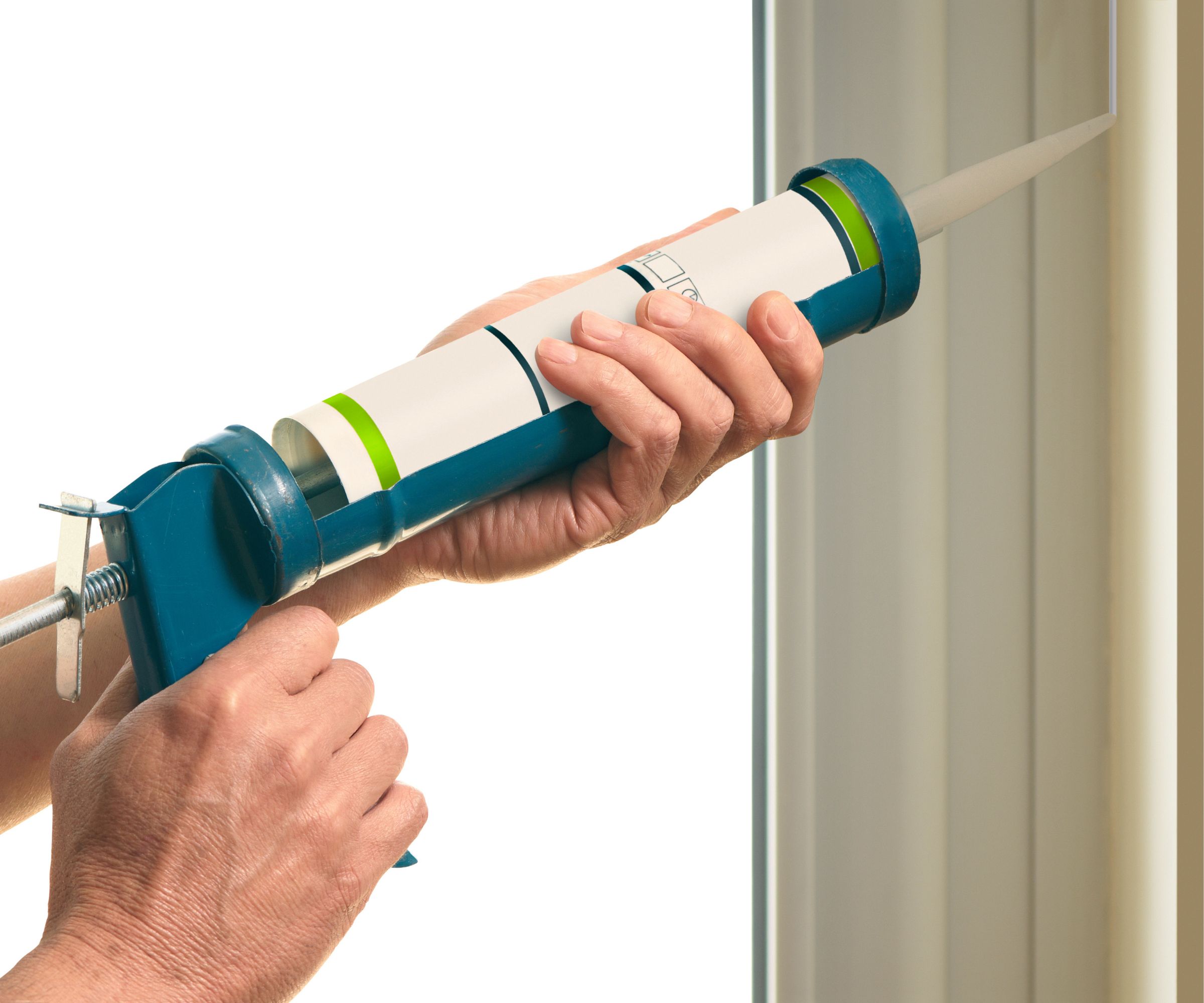6 places you shouldn't caulk around windows – and expert tips for caulking correctly
Experts share the places you shouldn't caulk around windows and what to do instead


Caulking around windows is essential for enhancing energy efficiency, and preventing drafts and heat loss. However, knowing where not to caulk is equally important in ensuring their functionality and longevity.
Understanding where you shouldn't caulk around windows is crucial for effectively weatherproofing your windows and preserving their integrity – helping you to avoid creating drafts and trapping moisture, which could lead to window damage over time.
Whether you're caulking to seal gaps in windows and stop cold air leaks, caulking to cut your energy bills, or simply seeking to soundproof windows without replacing them, our experts have provided essential tips to help you avoid costly mistakes.
Where you shouldn't caulk around windows
'As a general rule of thumb, homeowners should not caulk parts of a window that are meant to move, provide air circulation, or drain moisture,' explains Hugh Williams, home improvement expert at Magic Window. 'However, the specific components that fall under these categories will differ between window types and styles.'
1. Between movable parts

'Avoid caulking joints or seams between movable parts of a window, such as between the sash and the frame. Sealing these areas can restrict the window's proper operation,' explains Josh Mitchell, HVAC expert and owner of Air Conditioner Lab. 'This can create unwanted drafts, compromising the window’s energy efficiency, and can ultimately result in higher utility bills.
'You want to maintain flexibility where components need to move or where air exchange is necessary for functional reasons.'
2. The interior and exterior of the window
'Faulty window installations often result in a gap in the interior window sill, causing drafts. While caulking the gap might seem like the solution to closing this gap and preventing drafts, it will instead trap moisture and foster an environment for mold to spore,' warns Hugh Williams. In cases like this, instead of subpar attempts to repair a window, it's better to replace or reinstall the sill to address this issue effectively.
Design expertise in your inbox – from inspiring decorating ideas and beautiful celebrity homes to practical gardening advice and shopping round-ups.
'Also, when sealing gaps between the window frame and the exterior wall, avoid caulking directly onto the window sill,' recommends Arlen Wang. 'Sills are designed to channel water away from the window, and caulking them can prevent proper drainage, leading to water pooling and potential leaks.'
3. Window sash tracks
In sliding windows, the sashes (the part of the window that moves) glide along tracks.
'Caulking along the tracks where windows slide can impede their smooth operation, even rendering your window inoperable,' warns Arlen Wang, a contractor and Co-Founder of AnbuSafety. 'Instead, use silicone spray or dry lubricants to maintain functionality without compromising the seal.'
You can use this CRC water-based silicone lubricant from Amazon.
4. Expansion gaps

'Windows require a small gap around the frame to accommodate thermal expansion and contraction. Caulking this gap tightly can cause stress on the window frame and sealant, leading to cracks and failure over time,' explains Arlen Wang.
Additionally, caulking window expansion joints can restrict the natural movement of different window frame materials, such as vinyl, which can constrict and expand depending on the weather. This can compromise the window's structural integrity and reduce the window’s lifespan.
Leave a small, unsealed space to allow for movement and prevent potential damage.
5. Weep holes
Weep holes are small openings generally found on the bottom exterior of the window frame. These are designed to drain away any moisture that gets trapped inside.
Homeowners might caulk these holes thinking that they’re fixing a frame deformity or preventing drafts, when in reality, these openings drain any water that collects on the frame, and sealing them can lead to water damage and mold growth inside the walls.
6. Drip Edge
'The angled protrusion on the underside of your roof just above the window helps direct rainwater away from the house. Caulking over the drip edge can disrupt water flow and potentially lead to leaks around the window frame,' warns Josh Mitchell, HVAC Technician.
Tips for proper caulking

- Use the right caulk: Different caulks are formulated for various applications. For optimal performance, choose a high-quality, exterior-grade, and window-specific caulk. For most exterior applications, a silicone-based caulk is preferred because it is waterproof, flexible, and resistant to temperature changes. This GE advanced silicone caulk is a best seller on Amazon.
- Focus on sealing gaps: Apply caulk around the perimeter of the window frame where it meets the siding or trim. This creates a tight seal that prevents drafts and moisture infiltration. Apply caulk smoothly and evenly, ensuring complete coverage without gaps.
- Maintain proper ventilation: Ensure proper airflow in your home, especially in areas with high humidity, like kitchens and bathrooms. This reduces condensation buildup around windows.
- Don't caulk over old caulk: Resist the urge to caulk over old, deteriorating caulk. This creates a layered effect that can trap moisture and hinder proper adhesion of the new caulk. Always remove caulk that is worn completely before applying a fresh layer.
While caulking around windows is important for weatherproofing and insulation, it’s essential to recognize where not to caulk to avoid potential issues. Paying attention to these details can help maintain the functionality of your windows and prevent moisture damage over time.

Lola Houlton is a news writer for Homes & Gardens. She has been writing content for Future PLC for the past six years, in particular Homes & Gardens, Real Homes and GardeningEtc. She writes on a broad range of subjects, including practical household advice, recipe articles, and product reviews, working closely with experts in their fields to cover everything from heating to home organization through to house plants. Lola is a graduate, who completed her degree in Psychology at the University of Sussex. She has also spent some time working at the BBC.